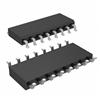UCC28528: Features: ·Provides Control of PFC and PWM Power Stages In One Device·Trailing-Edge PFC, Trailing-Edge PWM Modulation·Built-In Sequencing of PFC and PWM Turn-On·2-A Source and 3-A Sink Gate Drive fo...
floor Price/Ceiling Price
- Part Number:
- UCC28528
- Supply Ability:
- 5000
Price Break
- Qty
- 1~5000
- Unit Price
- Negotiable
- Processing time
- 15 Days
SeekIC Buyer Protection PLUS - newly updated for 2013!
- Escrow Protection.
- Guaranteed refunds.
- Secure payments.
- Learn more >>
Month Sales
268 Transactions
Payment Methods
All payment methods are secure and covered by SeekIC Buyer Protection PLUS.

 UCC28528 Data Sheet
UCC28528 Data Sheet








